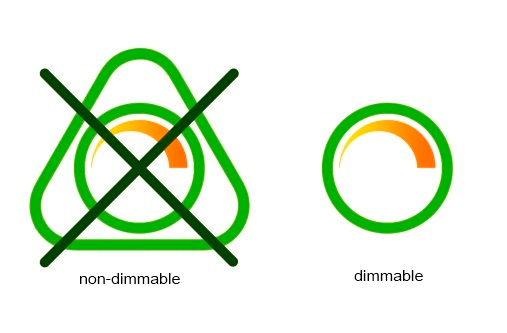Broadly speaking, LED lamps are available in two types: dimmable and non-dimmable. Traditionally, purchasing dimmable light bulbs has been a relatively trouble-free endeavour. However, since the arrival of long lasting, low energy LEDs purchasing dimmable lighting has become somewhat of a fraught topic.

Why buy dimmable light bulbs?
The first question you might be considering is, why dimmable? As well as saving energy, dimmable LED bulbs offer a lot of versatility allowing you to vary the visual appearance and mood of a space. This is particularly useful in rooms that serve multiple functions such as the kitchen. However, there are a few things to consider before you buy.
Buy the right bulbs
It might sound obvious, but always make sure the bulbs you are buying are actually dimmable. The last thing you want to do is accidentally connect a non-dimmable bulb to a dimmable circuit. At best the bulb is not likely to work; at worst, it is likely to damage the bulb. Always confirm the bulb is dimmable.
Meeting the minimum load
Traditional dimmer switches are designed to work on lighting circuits with a high load. In a lot of cases LED bulbs won't work with existing dimmer switches because the load on the circuit is not high enough to meet the minimum load on the dimmer switch. A typical trailing edge dimmer has a minimum load of around 50-60 watts. If the load on the circuit isn't high enough, the dimmer won't work. Newer, trailing-edge dimmer switches, like the Varilight V-pro range, are designed with a 10 watt min. load which helps address this problem.
The load can be calculated by taking the wattage of each bulb and multiplying it by the number of bulbs on the circuit. For example, if you have 10 bulbs, 5 watts each, the load on the circuit will be 50 watts.
Leading Edge vs. Trailing Edge
These are terms you may have come across before, but don't really understand. Without getting too technical, traditional leading-edge dimmers are designed specifically for high-power circuits and dimming filament bulbs where a variation in voltage is required. Dimming LED bulbs are a lot more complicated, particularly considering the inclusion of an LED driver in the design. Most LED bulbs require a trailing-edge mechanism to work effectively. When buying dimmable bulbs it is important to consider the type of dimmer you currently have and the type of dimmer you need. We always advise changing your dimmer switch if it isn't compatible as it is likely to shorten the life span of the bulbs.





